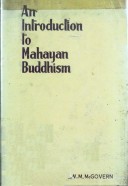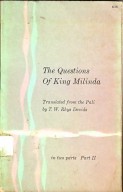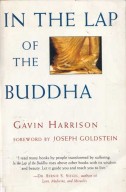Tìm Sách
Sách tiếng Anh-English >> An Introduction To Mahayan Buddhism
Thông tin tra cứu
- Tên sách : An Introduction To Mahayan Buddhism
- Tác giả : William Montgomery McGovern
- Dịch giả :
- Ngôn ngữ : Anh
- Số trang : 134
- Nhà xuất bản : Sahitya Ratan Mala Karyalaya-Varanasi
- Năm xuất bản : 1968
- Phân loại : Sách tiếng Anh-English
- MCB : 1210000003859
- OPAC :
- Tóm tắt :
CONTENTS
INTRODUCTION: The Doctrinal Evoution of Buddhism
- Epistemology And Logic
- The Nature of The Absolute And Its Relation To The Universe
III. The Trikaya—The Buddhist Doctrine Of The Trinity
- The Nature And Powers of Buddhism
- Psychology—Elements of Existence
- The Wheel Of Life And The Road To Nirvana
CONCLUSION: A Short History of Buddhism And The Principal Buddhism Sects
APPENDIX: The Sacred Literature of The Buddhists
INTRODUCTION
THE DOCTRINAL EVOLUTISahitya Ratan Mala KaryalayaSahitya Ratan Mala KaryalayaON OF BUDDHISM
Buddhism is divided into two great schools, Mahãyãna and Hĩnayãna. Both systems originated in India, but since the former predominates in China, Japan, Nepal, and, in a modified form, in Tibet and Mongolia, while the latter is confined almost exclusively to Ceylon, Burma, and Siam, they are often, and rather incorrectly, known as Northern and Southern Buddhism.
Mahãyãna is again divided into unreformed and reformed branches, the unreformed branch being found all over Eastern Asia, while the reformed branch has its centre in Japan. Roughly, we may compare these divisions of Buddhism to those of the principal Occidental faiths. Hĩnayãna, or the earlier and more primitive form of Buddhism, corresponds to Judaism; Unreformed Mahãyãna to Catholicism, and Reformed Mahãyãna to Protestantism.
Of recent years, owing to the labours of such scholars as Spence Hardy, Gogerly, Prof, and Mrs. Rhys-Davids, etc., Hinayana has become more or less known to the Western world, but Mahãyãna still awaits adequate treatment. Different scholars in dealing with Mahãyãna have spoken of it as a ritualistic and animistic degeneration of Hinayãna; as sophistic nihilism, as mystic pantheism. They have claimed it to be now monotheistic, now polytheistic, now atheistic; or finally, they have contented themselves with stating that it is a vast mass of contradictory ideas, unassimilated and undefined.
It is obvious that all of these descriptions can not be true, while the historical importance of the Mahãyãna philosophy renders it imperative to attempt some more concise interpretation of its essential elements, for as Christians far outnumber Jews, so do Mahayanists far outnumber Hinayanists; as Christianity has had far more important cultural connections than Judaism, so has Mahayana at the expense of Hinayana, ineffaceably linked itself with the civilizations of vast pạrts of Asia; and as the early fathers of the Christian Church and the schoolmen of the Middle Ages built up a religious and philosophic system far more important than the ideas expressed in Rabbinic schools, so is Mahayana the outcome of centuries of speculative development, enriched by materials from all sources, and expounded by the great bulk of the ancient metaphysicians of India and China, while Hinayana has remained far more narrow and confined in its philosophic evolution.
 Facebook
Facebook
 Google
Google
 Google+
Google+















